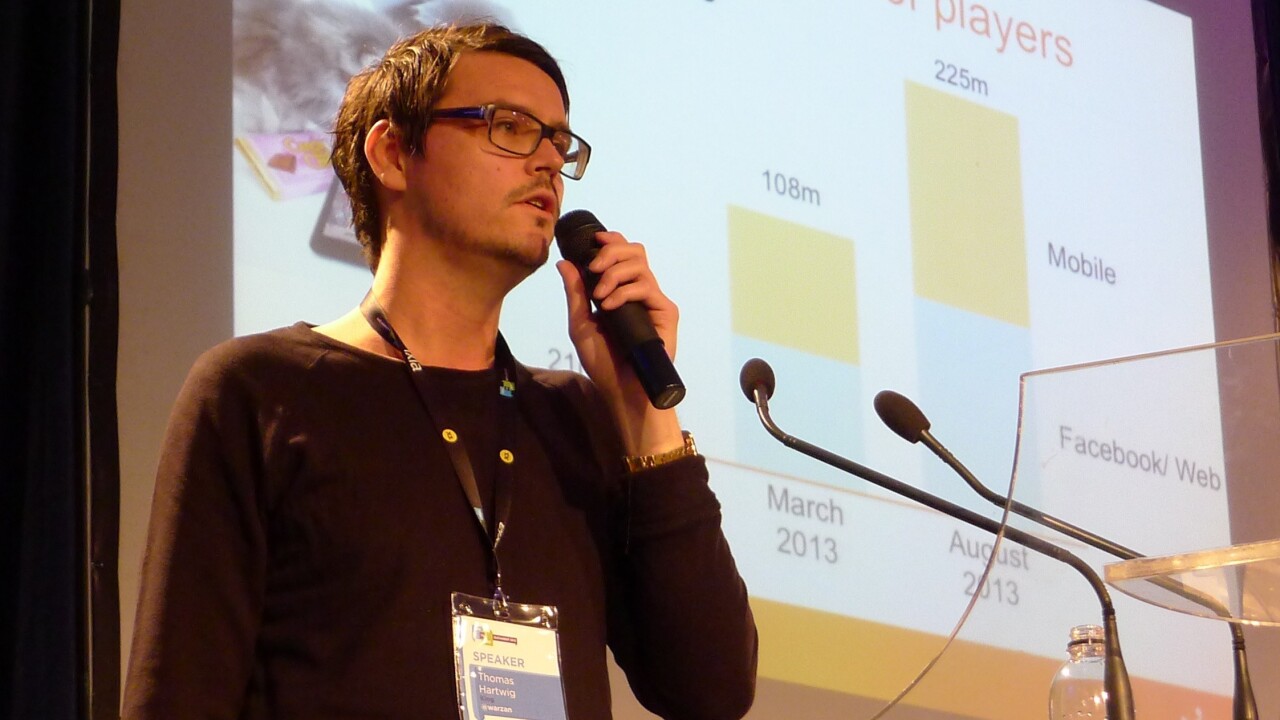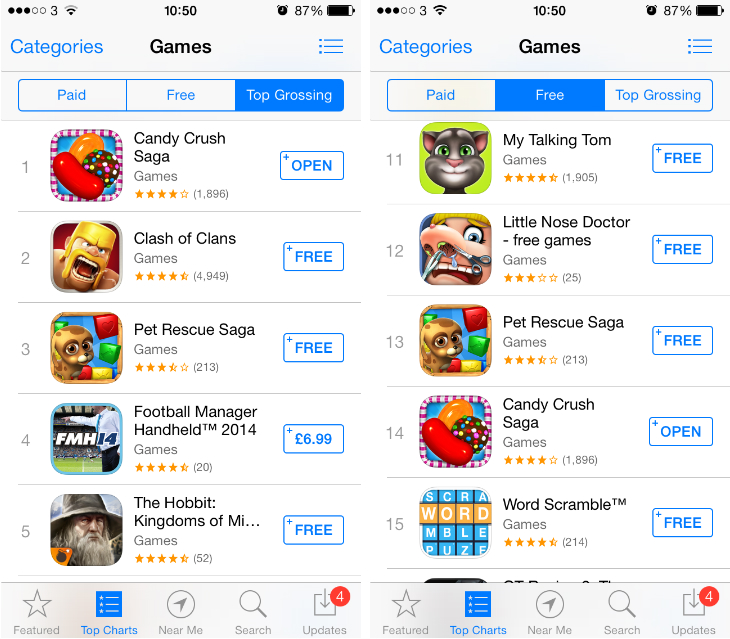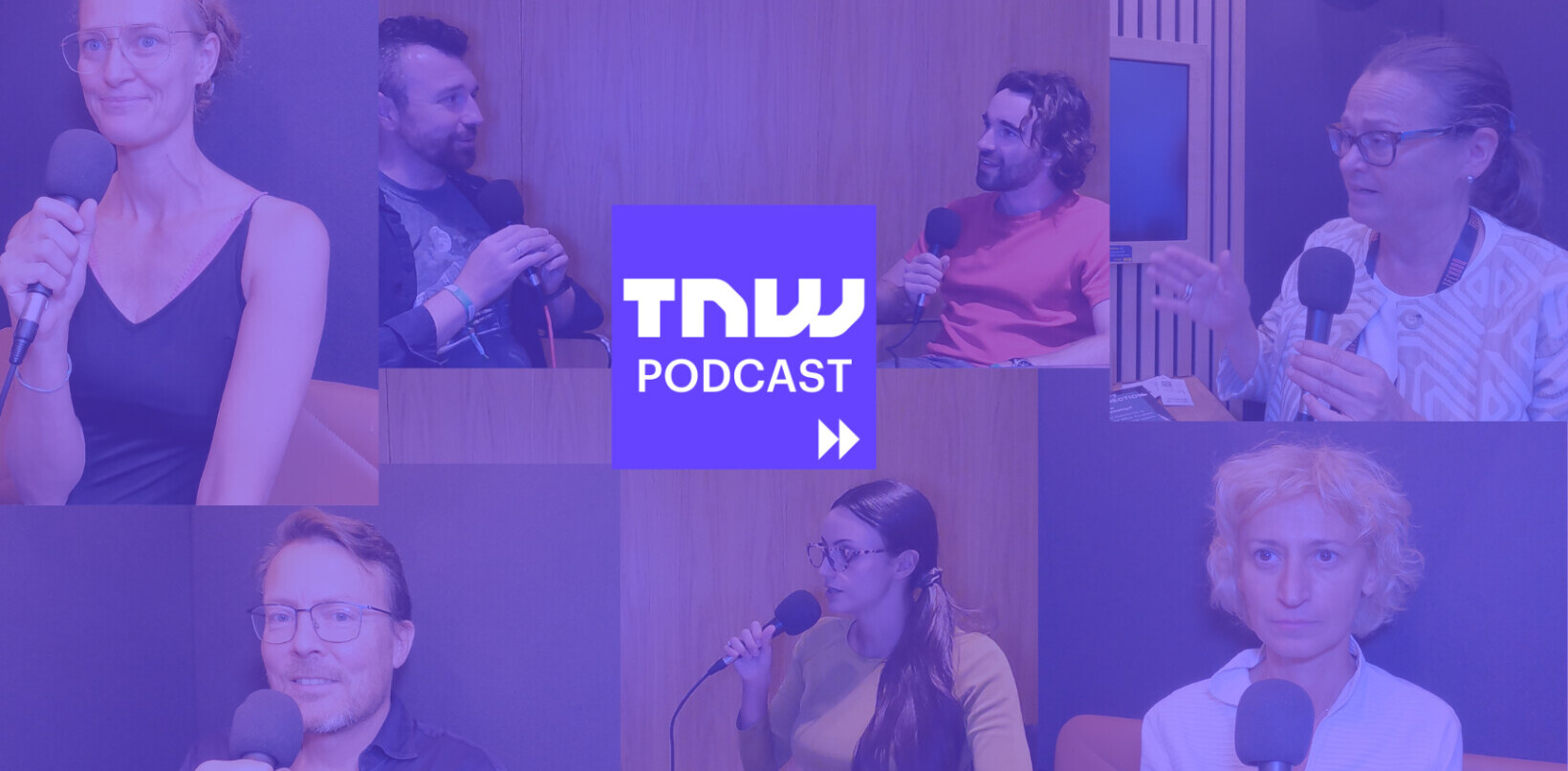
Free-to-play games have a bad reputation. The mechanics, structure and difficulty are often designed in a way that incentivizes in-app purchases. Some players feel they are being tricked into these payments and try to resist them at all costs, while parents worry what their children will rack up a frightful bill in the App Store or Google Play.
Nevertheless, the free-to-play model is heralded as the future of mobile games. It was one of six fundamental factors that Thomas Hartwig, co-founder of game developer King, called out in a speech entitled ‘How to get 100 million players’ at the How to Web 2013 conference in Romania last week.
“We try to design all of our games using this model,” he said. “We want it to be free for everyone. We don’t want any barriers.”
Candy Crush Saga
King’s most prolific release, Candy Crush Saga, needs little introduction. In exactly twelve months, the game has accrued 500 million downloads across iOS, Android and Facebook. More impressively, King has also navigated the near-impossible balancing act between monetization and playability. If you take a look at the reviews in the App Store or Google Play, you’ll find very few that deplore its use of the free-to-play model.
“The stuff that you buy in the game needs to make sense,” Hartwig told TNW. “They need to add to the game experience and the player experience. If it doesn’t make sense, then we shouldn’t charge for it. One of the reasons why the free-to-play model has a bad reputation is because some developers sell stuff that doesn’t make sense. And they charge a lot of money for it.”
To stay true to that vision, each development team at King focuses predominantly on the in-game experience. How it plays, the presentation and whether the game feels timeless. Discussion around monetization and in-app transactions comes afterwards.
Tweak, tweak, tweak
Post-release, King continues to tweak and develop the way that these payments are handled in Candy Crush Saga. Like a tightrope walker, it’s important that game developers constantly analyze their work and make small, incremental adjustments as they move forward.
“We look at all of the different features within the game on a weekly basis,” Hartwig said. “We try to ship every two weeks to add new content or modifications to the game, or to add new features. We are constantly looking at everything and comparing it to how it was six months ago, and how those customers are doing compared to the new ones.”
If necessary, King is prepared to make radical changes. Six months ago the studio decided to remove all in-app advertising from Candy Crush Saga. In fact, the company ditched all of the ads it was showing both on mobile and the web. The impact it was having on the player’s in-game experience simply wasn’t justifiable in the long run.
It was a huge decision, but one that highlights just how important it is to strike the perfect balance in a free-to-play game. Monetize too aggressively and users will simply stop playing, but if you remove all of the hooks you risk developing a game that won’t produce any revenue.
“When we launched Candy Crush Saga, we had some items that were pretty expensive, but they could last a longer period of time,” Hartwig added. “But at one point we said, ‘Okay, do we want to be associated with a game that sells stuff for $29?’ No, we didn’t.”
Transparency, above all else
Some developers also stand accused of misleading players about in-app transactions. To incentivize payments, it’s all too easy to portray a particular power-up as the only way to progress in the game. Furthermore, content is oftentimes exaggerated to increase its perceived value.
It’s a strategy that a number of developers have found effective. They know that many players will forgo asking for a refund, or simply accept that being duped is one of the risks associated with free-to-play games.
To build a successful studio though, reputation is critical. In addition to a high-quality game, it has become increasingly important that developers are fair and transparent about the free-to-play model. That means giving the player a clear explanation of what they’re buying and what they will gain from buying it.
“There are challenges in expressing that in a good way in the game,” Hartwig adds. “Overall, I think we are doing pretty well in terms of showing what they are getting, and that is extremely important. For game development to be sustainable for a longer period of time, [it’s important] not to rip people off.”
Conquering the charts
Part of the reason why the free-to-play model is so popular is because of the effect that it has on chart rankings. Once a title breaks into the top ten in the App Store or Google Play, it gains an incredible amount of exposure that will push its visibility even higher.
Breaking into the top ten is difficult; many imaginative, high-profile games have never made it. Developers that adopt the free-to-play model find it markedly easier though because players are far more willing to give their title a try. Even if they delete the app from their smartphone or tablet after the first session, the download helps the developer to push their game up the charts.
While considering the future of the free-to-play model, it’s difficult not to think about the structure of the App Store or Google Play, and how they could change in years to come. What if, like traditional home consoles, Apple and Google were to radically change how games are discovered and presented to the player?
“If they were to drastically change how they make the discovery of game, I think that would benefit smaller game studios, or even big ones like us,” Hartwig muses. “I don’t know, but it would affect the ecosystem in some way.”
The future of freemium
Free-to-play games are still a relatively new industry trend, but the model is starting to pass through into traditional home consoles and ‘triple-A’ game development. On the Xbox One, fighting game Killer Instinct allows gamers to download the game for free and play as a single character online. Expanding the roster is paid for by incremental payments.
The problem, however, is that free-to-play is hard to implement. Unlike the traditional pay upfront pricing model, a pricing strategy that works in one title might not work in another. Different genres and different franchises require careful consideration, or developers risk losing new and long-time players.
“That makes the model quite hard for people to understand,” Hartwig said. “It’s really about: What is your product and how does the virtual goods, and what you want to sell in the game…how does that all fit together.”
It’s a delicate balancing act, but one that King appears to have struck successfully with Candy Crush Saga.
Get the TNW newsletter
Get the most important tech news in your inbox each week.






